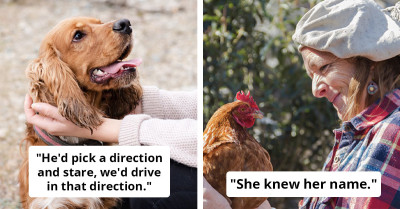Scientists Unearth 99-Million-Year-Old Creature Frozen in Amber, and It's Beyond Anything Imagined
While dinosaurs roamed the Earth 99 million years ago, new research reveals they weren’t the only creatures making their mark. Scientists have identified a previously unknown species of parasitic wasp that buzzed through the prehistoric skies — and it had a truly bizarre way of catching its prey.
Named Sirenobethylus charybdis, this ancient wasp species evolved a striking adaptation: a tail that functioned like a Venus flytrap. Researchers describe how the tail could snap shut to trap prey, after which the wasp would inject its eggs into the unfortunate victim, ensuring a grim fate for the host. The discovery, published in the journal BMC Biology, sheds light on the strange and sometimes brutal survival strategies of Cretaceous insects.
But how did scientists uncover this alien-like creature? The wasps were preserved in amber from the Cretaceous period, and paleontologists analyzed 16 tiny, perfectly encased specimens found in Myanmar. When study coauthor Lars Vilhelmsen, a wasp specialist and curator at the Natural History Museum of Denmark in Copenhagen, first examined the fossil, he was skeptical.
"When I looked at the first specimen, I noticed this expansion at the tip of the abdomen, and I thought this must be an air bubble," Vilhelmsen said. "It’s quite often you see air bubbles around specimens in amber."
It quickly became clear, however, that what he had spotted was no bubble; it was a unique, predatory structure unlike anything seen in modern wasps. This remarkable discovery not only expands our understanding of insect evolution but also paints a vivid picture of the strange and savage ecosystems that thrived alongside the dinosaurs.
Watch the video
"But then I looked at a few more specimens and then went back to the first one. This was actually part of the animal," Vilhelmsen said.
After this realization, Vilhelmsen and his colleagues from Capital Normal University in Beijing closely studied the various preserved positions of the wasps. Based on their observations, they concluded that the structure was movable.
"Sometimes the lower flap, as we call it, is open, and sometimes it’s closed," Vilhelmsen explained. "It was clearly a movable structure and something that was used to grasp something."
Fascinating Adaptations in Nature
Dr. David Attenborough, renowned broadcaster and natural historian, emphasizes the importance of understanding evolutionary adaptations in species like the newly discovered Sirenobethylus charybdis. He states, "Nature continually surprises us with its innovations, and this wasp's unique tail illustrates that creativity in survival strategies has existed for millions of years."
Such adaptations are crucial for survival, enabling species to thrive in competitive environments. Understanding these mechanisms can inspire current scientific inquiry, especially in ecological and evolutionary studies, where every new finding sheds light on the complexities of life on Earth.
According to the study, the closest modern comparison isn’t even an insect — it’s the Venus flytrap, a carnivorous plant whose leaves snap shut to trap and digest unsuspecting insects.
"There’s no way you can know how an insect that died 100 million years ago was living. So you look for analogs in modern insect fauna. Do we have anything among wasps or other groups that looks like this?" Vilhelmsen said.
"And there’s no real analog within insects. We had to go all the way out of the animal kingdom into the plant kingdom to find something that remotely resembled this."
Not What It Seems
While the wasp’s mechanism mirrors the trapping action of a Venus flytrap, researchers believe it wasn’t designed to kill. Instead, the structure served a more sinister reproductive purpose.
The wasp would grab another insect, inject its eggs into the body, and then release the host alive. Vilhelmsen explained that the larvae would develop as parasites inside the host, ultimately consuming it from within. He added that the host was likely a flying insect similar in size to Sirenobethylus charybdis itself.
Nowadays, living parasitoid wasp species exhibit similar (but not identical) behavior as described, where, for instance, cuckoo wasps lay their eggs in the nest of another wasp species, and once hatched, the larvae feast on their new hosts’ young.
Is This Ancient Wasp Comparable to Any Species Alive Today?
Amber Preservation
For paleontologists, amber fossils offer a rare and detailed glimpse into ancient ecosystems, preserving plants, flowers, and creatures in pristine detail for millions of years.
In the case of Sirenobethylus charybdis, the specimens were found in amber sourced from Myanmar’s Kachin region near the border with China. According to the study, the fossils were discovered several years ago and donated to Capital Normal University’s Key Laboratory of Insect Evolution and Environmental Changes in 2016.
However, the origin of the amber has sparked ethical debates. Following Myanmar's military coup in 2021, some paleontologists have called for a ban on researching amber sourced from the region, raising concerns about the human rights implications tied to fossil trade.
What Is a “Cretaceous Weirdo”?
Sirenobethylus charybdis belongs to a category of insects from the Cretaceous period often referred to as "Cretaceous weirdos."
According to Phil Barden, an associate professor at the New Jersey Institute of Technology, this label means the creature "had adaptations that are outside of the bounds of the critters that are alive today."
"This is significant because there are around a million known insect species — even with all of that living diversity, there are still lots of unexpected surprises in the fossil record that are beyond imagination," he added.
Experts in entomology, like Dr. John W. Whitaker, highlight that discoveries such as this ancient wasp can inform current ecological practices. He suggests that studying these historical adaptations can lead to better pest control methods today. For instance, understanding how Sirenobethylus charybdis captured its prey could inspire innovative biological pest control strategies that minimize chemical use. West Virginia University's entomology department advocates for integrating historical data with modern practices to enhance sustainability in agriculture.
This approach can lead to healthier ecosystems while addressing contemporary agricultural challenges.
Professional Assessment & Guidance
Research on ancient species like Sirenobethylus charybdis serves as a reminder of the intricate connections within ecosystems. Dr. Elizabeth Kolbert, an environmental journalist, points out that understanding these relationships is vital for conservation efforts. She notes that lessons from the past can inform how we approach biodiversity today. By embracing interdisciplinary studies, scientists can better comprehend the impacts of extinction and habitat loss. Sustainable practices, informed by historical data, can ensure that future generations inherit a vibrant planet where diverse species continue to thrive.



